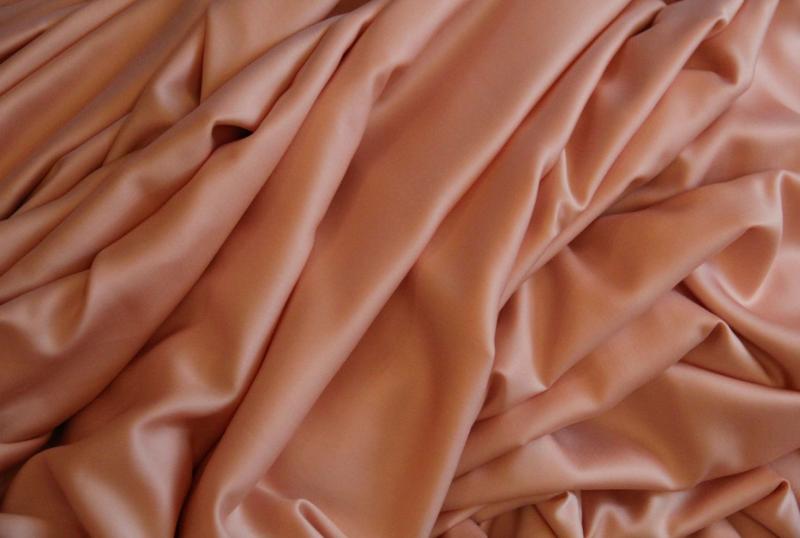Lyocell fabric, also known as Tencel, is a type of rayon fabric that is produced from cellulose fibers. It is made from wood pulp processed through an environmentally friendly production method called the Lyocell process. This allows the fabric to maintain the natural absorbency and breathability of cotton with the durability and smooth texture of rayon.
The Lyocell Process
Unlike other man-made cellulosic fabrics like rayon that are processed with harmful derivatizing chemicals, Lyocell Fabric is produced through a closed-loop solution spinning method. Dissolved cellulose pulp is processed into an amine oxide solvent solution and extruded through fine spinnerets into fibers. The fibers are then hardened, rinsed to remove residues, and dried. This solvent is then recovered and reused in the process, making lyocell production more sustainable compared to other fabrics.
Benefits of Lyocell Fabric
Soft and Breathable: Like cotton, lyocell fabric has a soft, breathable feel against the skin. It absorbs moisture well without feeling damp.
Durable and Wrinkle-Resistant: Despite its softness, lyocell fabric has good durability and strength. It retains its shape well without wrinkling easily compared to cotton.
Quick-Drying: Lyocell fabric dries faster than cotton, making it a good choice for activewear and garments that require frequent washing.
Eco-Friendly: The closed-loop production process allows solvent recovery and reuse, minimizing environmental impact. It is also biodegradable.
Hypoallergenic: Lyocell is less likely to trigger allergic reactions compared to synthetic fabrics.
Luxurious Hand-Feel: With its smooth texture and natural luster, lyocell feels luxurious yet lightweight.
Applications and Uses of Lyocell Fabric
Activewear: Its breathability, quick-drying properties and shape retention make lyocell a popular performance fabric for activewear, underwear, and swimsuits.
Linens and Home Textiles: High-end bed and bath linens are often made from lyocell for its cool, breathable touch against the skin.
Professional Wear: Dress shirts, trousers and tops made from lyocell are ideal for workwear due to its wrinkle resistance.
Outerwear: Lyocell can be blended with other fabrics for lightweight jackets, parkas and rainwear.
Medical Textiles: Its breathable, hypoallergenic qualities lend lyocell to medical uses like surgical gowns and wound care products.
Blended Fabrics: Lyocell is commonly blended with cotton, linen, wool and other materials to create fabrics with unique blended properties.
Sustainable Fashion: More designers are incorporating lyocell into their collections for its eco attributes appealing to environmentally-conscious consumers.
Durability and performance attributes of lyocell based fabrics enable multi-functional clothing meeting the evolving demands of sustainable fashion. Its blending capability further expands scope for innovative fabric development addressing environmental concerns. Lyocell thus emerges as a luxury eco-friendly alternative to conventional cellulosic and synthetic textiles.
Key Markets for Lyocell
Europe remains the largest lyocell producer and consumer market globally with countries like Germany, Italy, and the UK having a thriving textile industry. However, its usage is growing in other industrialized regions as well.
North America: Greater sustainability focus boosts lyocell adoption in active and outerwear brands in the US and Canada.
Asia: Rising living standards increase lyocell demand from China, India, and other Asian nations for apparel, home textiles and medical uses.
Global Lyocell Market Outlook
The global lyocell fiber market size was valued at over US$ 1.5 billion in 2021. It is forecast to expand at a compound annual growth rate of over 5% from 2022 to 2030 on the back of favorable properties and increasing regulations against non-degradable synthetic fibers.
Apparel manufacturing remains the largest end-use segment aided by demand for breathable athleisure and designer apparel incorporating lyocell. Home textiles and industrial usage in wipes and filtration materials will also contribute significantly to future market revenues.
Key players like Lenzing AG, Aditya Birla Group and Tangshan Sanyou Group have expanded production capacities to cater rising lyocell needs of textile and medical sectors. Rapid uptake in blended fabrics, activewear, sustainability-themed collections point towards a bright long-term prospect for lyocell fabric in the textiles industry.
Get more insights on Lyocell Fabric
